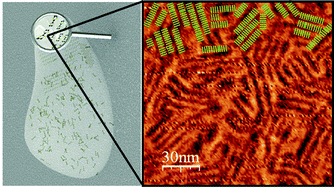Assembly of functional molecular nanostructures on surfaces
Abstract
This tutorial review discusses different techniques for the preparation and deposition on surfaces of organic

* Corresponding authors
a
Institut de Ciència de Materials de Barcelona (CSIC), Campus Universitari, Bellaterra, Spain
E-mail:
amabilino@icmab.es
Fax: 34 93 580 5729
Tel: 34 93 580 1853
This tutorial review discusses different techniques for the preparation and deposition on surfaces of organic

 Please wait while we load your content...
Something went wrong. Try again?
Please wait while we load your content...
Something went wrong. Try again?
E. Gomar-Nadal, J. Puigmartí-Luis and D. B. Amabilino, Chem. Soc. Rev., 2008, 37, 490 DOI: 10.1039/B703825A
To request permission to reproduce material from this article, please go to the Copyright Clearance Center request page.
If you are an author contributing to an RSC publication, you do not need to request permission provided correct acknowledgement is given.
If you are the author of this article, you do not need to request permission to reproduce figures and diagrams provided correct acknowledgement is given. If you want to reproduce the whole article in a third-party publication (excluding your thesis/dissertation for which permission is not required) please go to the Copyright Clearance Center request page.
Read more about how to correctly acknowledge RSC content.
 Fetching data from CrossRef.
Fetching data from CrossRef.
This may take some time to load.
Loading related content
